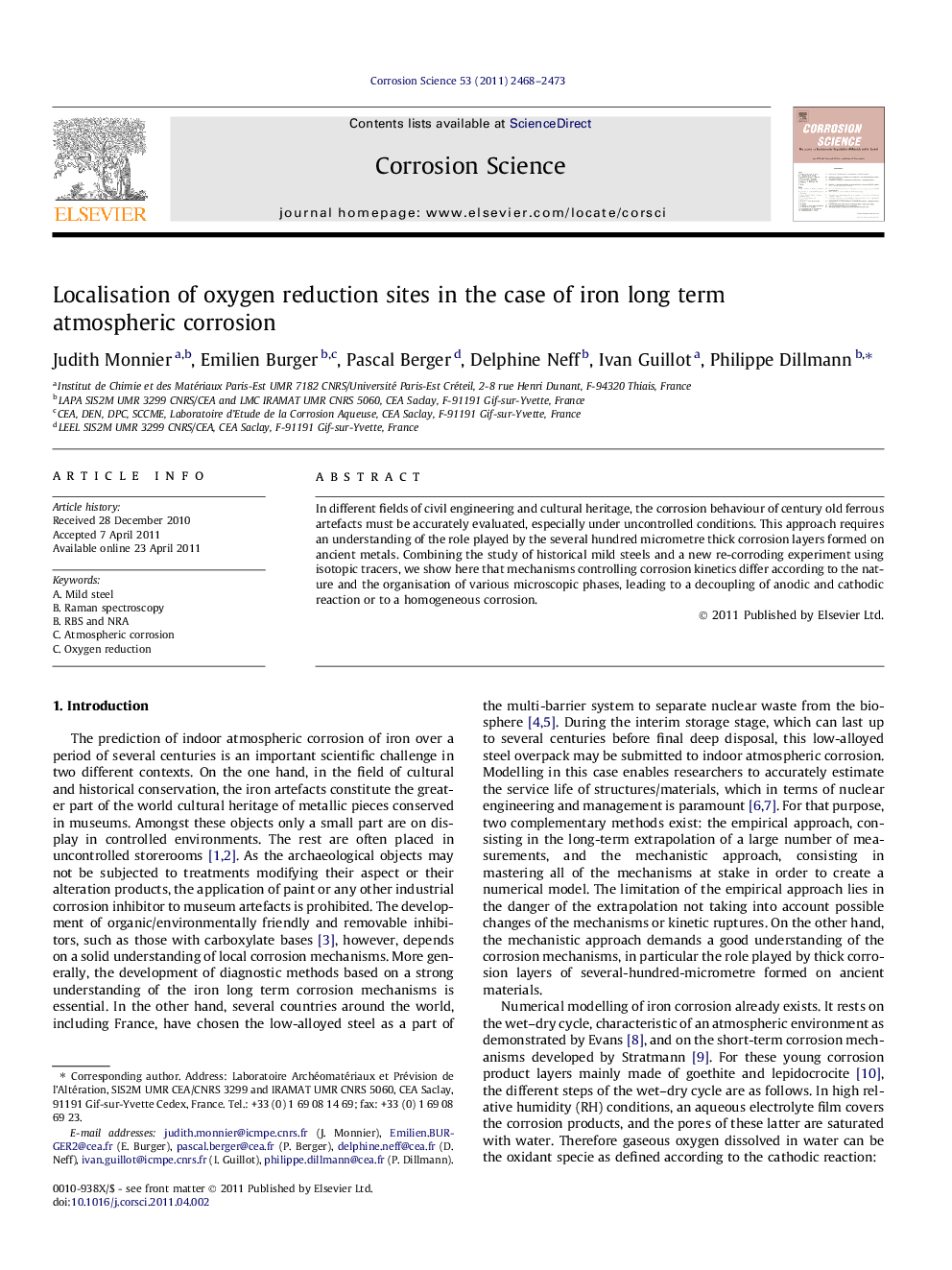| Article ID | Journal | Published Year | Pages | File Type |
|---|---|---|---|---|
| 1470011 | Corrosion Science | 2011 | 6 Pages |
In different fields of civil engineering and cultural heritage, the corrosion behaviour of century old ferrous artefacts must be accurately evaluated, especially under uncontrolled conditions. This approach requires an understanding of the role played by the several hundred micrometre thick corrosion layers formed on ancient metals. Combining the study of historical mild steels and a new re-corroding experiment using isotopic tracers, we show here that mechanisms controlling corrosion kinetics differ according to the nature and the organisation of various microscopic phases, leading to a decoupling of anodic and cathodic reaction or to a homogeneous corrosion.
► New findings on long term atmospheric corrosion of iron. ► New experiment combining isotopic markers and wet–dry cycling. ► Use of ancient iron artefacts with a thick corrosion product layer. ► Refining of atmospheric corrosion mechanisms with two possible mechanisms identified.
